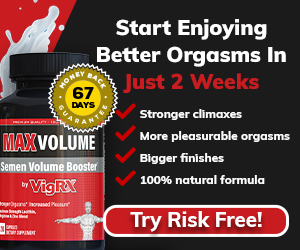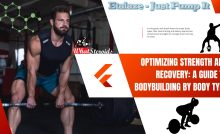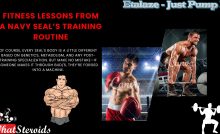Building Hip Muscles


Building strong hip muscles means good support for your back and knees, thus obviously decreasing the risk of injuries. If you are one of those people looking to strengthen hip muscles, then this article is just on time for you!
Why the Hip Muscles?
What Are the Hip Muscles? The hip muscles are made up of four major groups: Gluteals (glutes), Hamstrings (semitendinosus, semimembranosus, biceps femoris), Adductors (adductor magnus and adductor longus), Abductors (abductor brevis and pectineus).
For a bodybuilder, it is essential to have solid and well-developed hip muscles. These muscles play an important role in providing stability and balance during workouts and helping lift heavier weights.
They also help to protect the lower back from injuries due to excessive strain. Strong hip muscles can also help bodybuilders achieve better form during their exercises, leading to improved results.
Therefore, bodybuilders need to focus on strengthening their hip muscles to maximize their gains from their workouts.
You Need Balance Before Any Workout
Strengthening your hip muscles is an essential part of any fitness routine. Strong hips can help improve balance, support the spine, and reduce the risk of injury. Training your hip muscles can also help you build strength and power for running, jumping, and weightlifting activities.
We'll discuss how to train your hip muscles effectively for optimal results. We'll cover the best exercises for targeting the glutes, hamstrings, adductors, and abductors, as well as tips on proper technique and form. With these tips in mind, you'll be able to get the most out of your hip muscle training sessions.
The glutes, hamstrings, adductors, and abductors are all muscles that you can exercise by doing exercises at the gym. However, for each of these muscles, specific movements involve various joints. Some exercises work the muscle through a range of motion, whereas other activities work them in one-joint or two-joint ranges.
For example-- kicking a soccer ball involves many joints like your knees, ankles, and hips in addition to your feet-- so it's challenging to isolate just one joint to target with an exercise. In contrast, squatting is an exercise where you engage all your legs and hips to move your center of gravity up while staying in one place.
Workout Routine for Hip Muscles
First of all, you'll have to review your workout routine to your feet. It is essential to see your feet as a separate body part, including their quadriceps, thighs, and calves.
The day is designed to work out your legs; you need to pump all three muscle groups with the basic exercises that connect to the work of all of your joints.
Suppose you do not pay enough attention to your tendons, possibly because of the quadriceps muscles as the biceps, the most robust stand on your body, the other muscles. However, the tendons are also a factor in your success as a bodybuilder.
However, there is a tendency among athletes to put more emphasis placed on the quadriceps simply because they do not see their tendons in the mirror.
The Hack Squat
When it comes to building muscle, the Hack Squat is a great addition to your repertoire. Not only is it an excellent lower body lift that targets the glutes, quads, hamstrings, and lower back muscles, but according to its creator Stuart McRobert it has a secondary benefit of improving spinal disc health.
"The Hack Lift forces flexion in multiple planes at once," he explains. "Powerlifters originally did it to open up their spines in preparation for leg pressing competitions." Try holding a kettlebell between your feet for extra weight as you perform this hack squat variation - it will give your hips and lower back a strong workout.
How to do it
Stand with your feet hip-width apart, as in the Squat position.
Bend your knees slightly (just enough to feel a slight stretch) and hold a kettlebell between your feet, with the ball of the foot on top.
Lower yourself until you are at least parallel to the ground, then push back up explosively without swinging or jerking, keeping both of your feet pressed firmly against the floor throughout.
Hack Lift
The Hack Lift forces flexion in multiple planes at once. Powerlifters initially did it to open up their spines in preparation for leg-pressing competitions.
Try holding a kettlebell between your feet for extra weight as you perform this hack squat variation - it will give your hips and lower back a strong workout.
How to do it
Stand with your feet hip-width apart, as in the Squat position.
Bend your knees slightly (just enough to feel a slight stretch) and hold a kettlebell between your feet, with the ball of the foot on top.
Lower yourself until you are in the bottom position of a Hack Squat.
Press back up to the top position.
Start by standing on your right foot with your left foot out in front of you and your right knee bent at a 90-degree angle over your left knee.
Using both hands, hold the kettlebell with its handle in front of you, directly above your head and in between both hands.
Bring the arms back and take a deep breath in; this will put tension on the muscles in your lats that will help keep you stable as you perform this hack squat variation - it will give your hips a little extra stability so you can keep your feet in contact with the ground.
Sit back into a hack squat to get the weight on your hips. Your knees should be slightly bent, and the toes should be pointed out to the sides while keeping your heels firmly planted on the ground.
Pushing through your heels will take pressure off your spine and allow you to sit back more deeply into a hack squat with good form, which is an integral part of this exercise.
Looking Out for Tendons While Working Hip Muscles
But like the triceps biceps tendon attached to a larger volume of the quadriceps muscles and strengthen them. Even though I'm starting work on pumping up the muscles of the legs with the quadriceps muscles, I try to fulfill them without detriment to the tendons.
After several sets of heavy squats, leg presses, and stretches, it's time to work on the tendons to the maximum.
Must Read: Goblet Squats For Increasing Lower Body Flexibility And Strength
Fold and Thrust for Hip Muscles:
A good piece of advice is to start your training on the tendon with lying leg curls. While performing this exercise, many make sudden movements and try to turn out. The right advice here is to avoid doing so. Your hips and upper legs should be flat on the bench. Lift the weight slowly, carefully monitor the movement, and do not make sudden jerks.
The best effect is achieved by exercise during prolonged strain tendons. Make a sharp cut at the movement's height, and your muscles start to burn. You can do 10 or 12 reps; perform a couple with a more tremendous effort at the end of the movement, using the help of a partner.
Leg Thrust
Leg thrust is another type of exercise that has to be included in the feet training. It is vital to success, but most bodybuilders perform it wrongly or do not perform it at all. This is a big mistake since this exercise is beneficial.
Use a grip on top, slightly narrower than shoulder width, and it is recommended to protect your hands with bandages. You can bend your knees and fix your legs in this position until the lift bar is to a level lower than your legs. So begins the movement itself.
By raising the bar, get your back straight and look well ahead. Taking the weight, think of your tendons, not the back. End up repeating, lowering the bar back to the level of the legs. Never put a barbell on the floor until you complete the entire set. You can perform 8 to 10 repetitions with the same degree of stress.
Leg Curls
Finish your workout on the tendons standing leg curls. Such movements provide a load of a different nature than lying leg curl, but the movement has to be performed slowly and carefully, as straining the muscles at the peak of their reduction. It is advisable to perform around 10-12 repeats.
You do the exercise with one foot in turn. You will fall if you try to execute it with both feet simultaneously. Despite these simple things, the training day on your feet can sometimes confuse you. Have to be reiterated that you do the exercise sensibly.
Parting Shot
Do not make any sudden movements, and do not sleep. The main thing that you have to remember is that your movements have to be slow and deliberate. Only performing exercises correctly guarantees your hips will grow and flourish in your eyes.
Recent Posts
Optimizing Strength and Recovery: A Guide to Bodybuilding by Body Type
Every body tells a different story—and in bodybuilding, honoring that story is the key to…
Fitness Lessons from A Navy Seal’s Training Routine
Navy SEAL training is designed to forge elite tactical athletes. It’s not your average gym…
Exploring BPC-157 Healing Properties
BPC-157 is a synthetic peptide derived from a protein found in the stomach, known for…
The Ultimate Guide to Foods That Support Hormonal Balance for Bodybuilders
Hormonal balance is crucial for bodybuilders aiming to maximize muscle growth, recovery, and overall health.…
Steroid Shops Review
osgear.se Reviews ⭐⭐⭐⭐⭐ Score: 97.78% Osgear has consistently maintained a 99% customer satisfaction rate across key…
ACE-031: A Powerful Myostatin Inhibitor
ACE-031 is a synthetic peptide designed to block myostatin, a natural regulator of muscle growth.…




